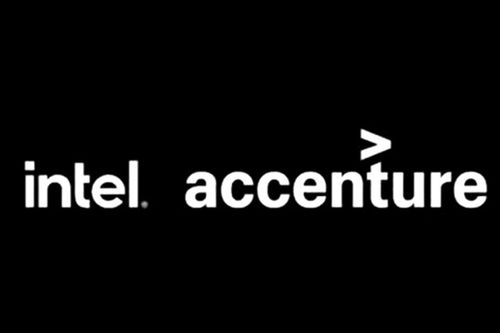
New reference kits also cover manufacturing inspection tools and asset utility health
Intel and Accenture have released open source software for businesses to implement their AI applications in the cloud and at the edge.
The AI Reference Kits are designed to accelerate the adoption of AI across industries. They are built on a combination of Intel’s AI software portfolio and the oneAPI programming model.
The pair built and published four kits, covering utility asset health, visual quality control, customer chatbots and intelligent document indexing. Each is free to download via Intel's website or GitHub.
These reference kits will enable millions of developers and data scientists to introduce AI “quickly and easily into their applications or boost their existing intelligent solutions,” according to Wei Li, Intel vice president and general manager of AI and Analytics, in a statement.
Intel said it would be releasing additional open source AI reference kits over the next year. These new releases would focus on models to aid businesses' digital transformation efforts.
Utility asset health
Intel and Accenture created a predictive analytics model trained to help utilities deliver improved service reliability.
Using Intel-optimized XGBoost, it can model the health of utility poles with 34 attributes and more than 10 million data points, including geospatial data, asset age and mechanical properties, and prior repair and maintenance history.
The model learns as new data, outages and other changes in condition are provided.
Customer chatbots
The customer chatbot market was valued at $525.7 million in 2021, according to figures from Grand View Research, and is expected to grow by a compound annual growth rate of 25.7% from 2022 to 2030. The demand is being driven by increased adoption in customer service enterprises to reduce operational costs.
In a bid to help entities looking to adopt conversational chatbots, Accenture and Intel’s kit includes deep learning natural language processing models for intent classification and named-entity recognition. The models use a combination of BERT and PyTorch.
The pair said its chatbot model can improve 45% faster inference performance for NLP models compared to Accenture's stock implementation.
Intelligent document indexing
Given that companies process and analyze millions of documents every year, Intel and Accenture built a support vector classification (SVC) model to improve data pre-processing, training and inferencing times.
AI can automate the processing and categorization of these documents for faster routing and lower manual labor costs, the pair suggested.
Visual quality control
And the fourth and final model is designed around Industry 4.0 – using computer vision to visually inspect manufacturing goods.
Typically, computer vision requires sizable compute power during training and continual retraining as new products are introduced.
Intel and Accenture’s AI Visual QC model was tasked with detecting defective pharmaceutical pills. Using hyperparameter tuning and optimization, it managed to obtain 95% accuracy.
About the Author(s)
You May Also Like


.jpg?width=700&auto=webp&quality=80&disable=upscale)
.jpg?width=700&auto=webp&quality=80&disable=upscale)
.jpg?width=700&auto=webp&quality=80&disable=upscale)
.jpg?width=300&auto=webp&quality=80&disable=upscale)
.jpg?width=300&auto=webp&quality=80&disable=upscale)
.jpg?width=300&auto=webp&quality=80&disable=upscale)
.jpg?width=300&auto=webp&quality=80&disable=upscale)
.jpg?width=300&auto=webp&quality=80&disable=upscale)